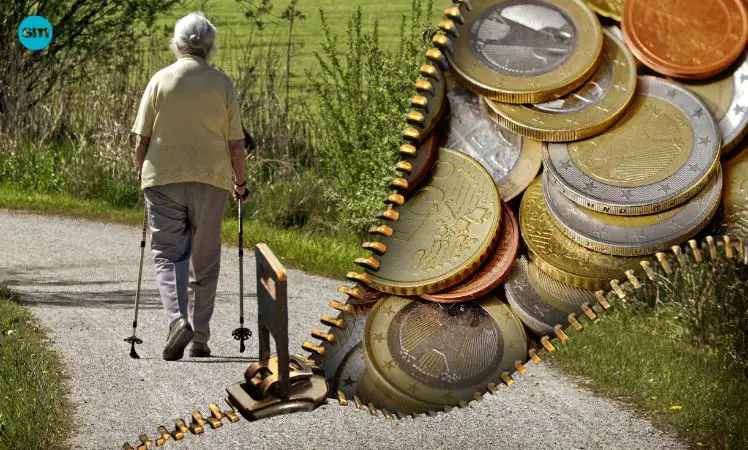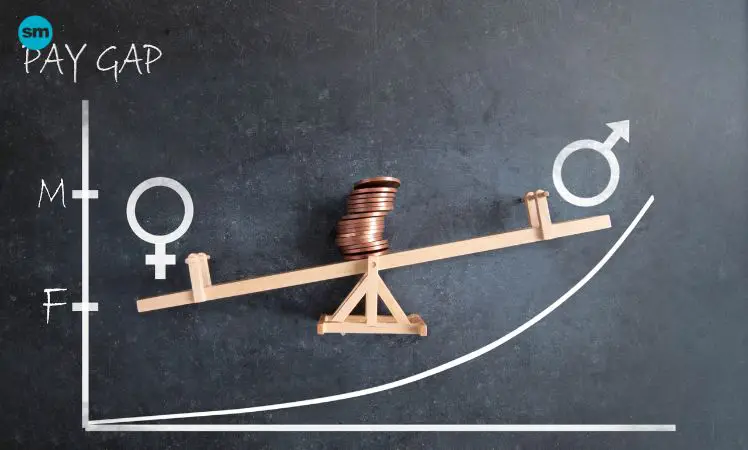Last Updated on September 13, 2023 by Lori Pace
Our society’s structures are responsible for many of the reasons that the pensions gap exists. Women will often take time off work to care for their children. This is why many women are forced to reduce their hours and work part-time to provide childcare. These factors can lead to a divergence in career prospects and earnings potential. This can have a long-term effect on their lifetime income and workplace pension savings. Women live longer lives than men, have higher social care needs, and require a larger pension. All of these things affect single mothers’ pensions.
Women are more likely to be worried about rising household costs than men and to take steps to reduce their outgoings such as cutting back on food and utilities. This behavior shows that women find it harder to bridge the gender gap in retirement planning due to current economic conditions. Single mothers are the most financially vulnerable and have the highest levels of concern about the cost of living.
Income Gender Gap
A long-standing gender gap in income means women will likely have a lower capacity to absorb increases in living costs. Structural factors like the over-representation of part-time work, greater childcare responsibility, and career breaks cause these income gaps.
The average man makes more than $33,000 per year, while the average woman earns more than $22,000. Savings rates as a percentage of income are comparable for those who save. However, income differences can mean that men continue to save more for retirement.
The Impact Of Increasing Cost Of Living On Retirement Savings
Rising living costs pose a variety of challenges. Renters are among the most affected by rising living costs. Wealthier people, however, are less likely to feel immediate pressure and will still have to deal with inflation. To understand how the rising cost of living affects different social groups, we examined in detail:
The Cost of Living Impact on Renters
Renters are less likely to have recovered from the pandemic. 40% of those renting considered their financial situation worsened since before COVID-19. This compares to 36% who consider themselves to be homeowners. In line with their financial vulnerability, 51% of renters stated they are worried about meeting their needs due to rising prices – significantly higher than the 32% of homeowners.
As renters face higher housing costs than homeowners, the rise in inflation means that rents are rising while fixed-term mortgage holders are not yet affected by these increases. The median rent has increased by over 3% over the past year. This means that the average rent has risen by more than $20 per month.
Impact of The Cost of Living Crisis On Single Mothers’ Pension
The likelihood of women cutting back in other areas is higher than that of men. 38% of women say they would cut down on essentials, reduce savings, take on more debt, or sell assets, compared to 32% for men.
Evidence also shows that rising living costs are having an impact on retirement savings. 16% of women stated that they had reduced their retirement savings in order to meet rising costs. The figure is almost the same as that of men (15%), but it comes in the context where women are less likely than men to save for retirement. Although the average monthly contribution reduction for women is $152, it may be higher if you include employer contributions.
Is The Pensions Gender Gap Getting Worse?
Today’s retirees have huge gaps. On average, 65-74-year-old men have over $250,000 in pension assets, while women have less than $150,000. As I have mentioned, women are likely to require care later in life due to their longer lifespans.
As a result, we have previously calculated that the average woman would require PS85,000 more to save for retirement than the average man to enjoy a similar quality of life. This is evident that women are more concerned about running out of money in retirement (61% vs 52%).
How Is The Rising Cost Of Living Impacting Single Mothers’ Pension?
Single mothers are more likely to be concerned about rising living costs than other groups. 55% of single mothers report feeling this way, while 42% of women and 36% respectively. Single mothers are more likely than other women to cut back on essentials. 28% reported doing this, compared to 24% for women and 19% for men.
Single mothers face additional challenges due to the current economic climate. Single mothers are generally the least prepared for retirement. 72% worry about running out of money in retirement, as opposed to 61% for all women and 52% for men. 40 percent of single mothers say they don’t have a pension and 29% of women are.
There is no one solution to the problems faced by single mothers. While income inequalities are difficult to resolve, many things can be done to support single mothers, including childcare and equal access to the workforce. However, single mothers will need to be able to rely on their assets and the state pension. It is important that they have a good work record in order to maximize their entitlement.
Closing The Pensions Gender Gap Affecting Single Mothers’ Pension
To close the gap, there is still much to do. The cost of living crisis has a significantly worse impact on women than on the rest of society. There needs to be more support for childcare. This is a major financial problem and a barrier to greater equality.
We can close the gender gap in pensions by addressing the social structures directly. While the cost of living is a prominent topic at the moment, the reality is that the gap was significant even before the current crisis and the Coronavirus pandemic.
- Equalize shared parental leave rights, including addressing childcare costs and ongoing efforts to increase awareness.
- Encourage financial literacy and engagement at an early age. This will ensure that all demographics know the contents and how they are delivered.
- Encourage young women to contribute to their workplace pensions by providing additional guidance and encouragement.
- To provide tailored guidance for women at work, implement the Money and Pension Services recommendations.
- Make sure that both men and women are informed about annuities. Also, consider the role of joint annuities when providing income for a spouse after the death. Providers should first offer couples a joint annuity.
Although these are not immediate fixes, we believe they can address some long-term issues that have made the retirement prospects for women much worse. Only by focusing our efforts on closing the gender gap in pensions can we make retirement more comfortable for all.



